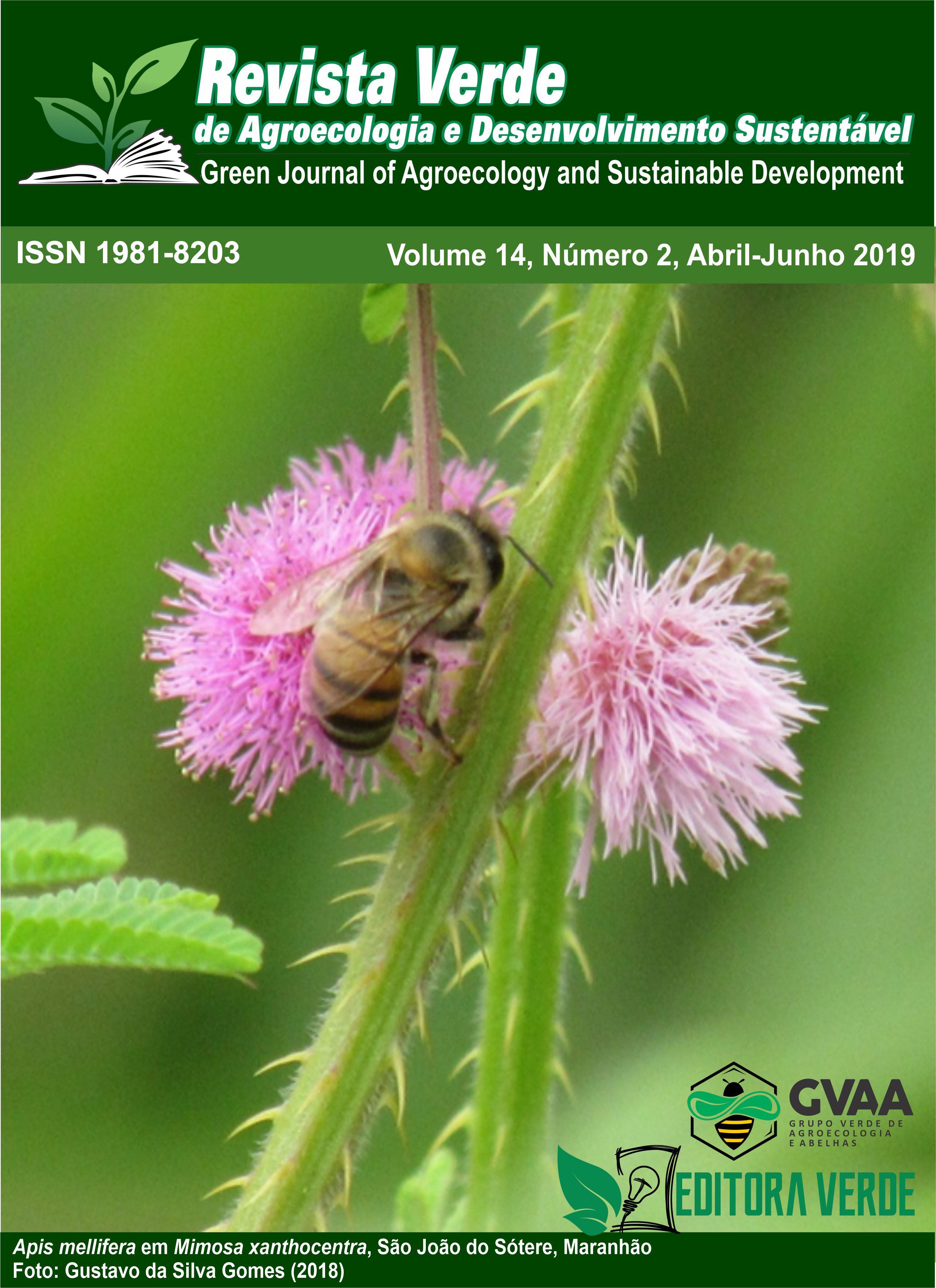The influence of dispersive medium on efficient and eco-friendly synthesis of silver nanoparticles for application in antimicrobial fabric
DOI:
https://doi.org/10.18378/rvads.v14i2.6163Keywords:
Nanostructures, Plant extract, Green synthesis, Melissa Officinalis Leaves, Smart textilesAbstract
Silver nanoparticles have been increasingly used in industrial applications for a long time. Chemical methods of synthesizing silver nanoparticles can be toxic and expensive. Therefore, many studies have emerged to create ecologically correct synthetic routes that provide good dispersion and stability in the extractive medium. Plant species are investigated for the discovery of a new dispersive medium for silver nanoparticles (AgNPs) synthesized by the green route. AgNPs are disperse in plant extract, by plants available in Brazil. In this work, Melissa Officinalis leaves were used as a dispersive medium of nanoparticles. The characterization techniques used became possible to observe the superficial modifications with the presence of well-dispersed nanostructures, which are fundamental for the production of intelligent textiles with antimicrobial action. Thus, it was possible by means of each synthesis route to evaluate the dispersion and morphology of AgNPs in different dispersive media of Melissa Officinalis, concluding that it is very efficient for the stabilization of AgNPs.Downloads
References
AKHTAR, B. S.; PANWAR, J.; YUN, Y.S. Biogenic synthesis of metallic nanoparticles by plant extracts. ACS sustainable Chemistry and Engineering, v. 1, p. 591-602, 2013.
BACKX, B. P.; ANTUNES FILHO, S. Green Dispersive Systems and the Formation of Micro- and Nanostructured Multiphase in Leaves Extract from Psidium guajava L. SciFed Nanotec Res Let 2:2, 2018.
BACKX, B. P.; PEDROSA, B. R.; DELAZARE, T.; DAMASCENO, F.; SANTOS, O. A .L. Green Synthesis of Silver Nanoparticles: A Study of the Dispersive Efficiency and Antimicrobial Potential of the Extracts of Plinia Cauliflora for Application in Smart Textiles Materials for Healthcare. J Nanomater Mol Nanotechnol, v. 7, n.1, p., 2018.
BACKX, B. P.; SANTANA, J. C. S. Green Synthesis of Polymer Blend impregnated with silver nanoparticles in Euterpe Oleracea dispersive medium. International Journal of Green and Herbal Chemistry, Sec. A; v.7, No.2, p. 424-429, 2018.
FRANCI, G.; FALANGA, A.; GALDIERO S.; PALOMBA, L. Silver nanoparticles as potential antibacterial agentes Molecules. Molecules, 20(5), p. 8856-8874, 2015.
HENGLEIN, A. Small-particle research: physicochemical properties of extremely small colloidal metal and semiconductor particles. Chemical Reviews, v. 89, n. 8, p. 1861–1873, 1989.
KEAT, C. L.; AZIZ, A.; EID, A.; ELMARZUGI, N. Biosynthesis of nanoparticles and silver nanoparticles. Bioresources and Bioprocessing, v.2, n. 1, p. 47, 2015.
KUMAR P. P. N.; PAMMI, S. V. N.; KOLLU, P.; SATYANARAYANA, K. V. V.; SHAMEEM, U. Green synthesis and characterization of silver nanoparticles using Boerhaavia diffusa plant extract and their antibacterial activity. Industrial Crops and Products, v. 52, p. 562-566, 2014.
LARA, H. H.; AYALA N.; TURRENT, L.; PADILLA, C.R. Mode of antiviral action of silver nanoparticles against HIV-1, Journal of Nanobiotechnology, 8:1, 2010.
MIMICA-DUKIC, N.; BOZIN, B.; SOKOVIC, M.; SIMIN, N. Antimicrobial and antioxidant activities of Mentha officinalis L. (Lamiaceae) essential oil. J. Agric. Food Chem., 52(9), p. 2485-2489, 2004.
MITTAL, A. K.; CHISTI, Y.; BANERJEE, U. C. Synthesis of metallic nanoparticles using plant extracts. Biotechnology advances, v. 31, n. 2, p. 346-356, 2013.
PAL, S.; TAK, Y. K.; SONG, J. M. Does the Antibacterial Activity of Silver Nanoparticles Depend on the Shape of the Nanoparticle? A Study of the Gram-Negative Bacterium Escherichia coli. Appl Environ Microbiol, v.73, p. 1712-1720, 2007.
RAI, M.; YADAV, A.; GADE, A. Silver nanoparticles as a new generation of antimicrobials. Biotechnology advances, p.76-82, 2008.
RAVEENDRAN, P.; FU, J.; WALLEN, S. L. A simple and green method for the synthesis of Au, Ag, and Au–Ag alloy nanoparticles. Green Chemistry, v. 8, p. 34-38, 2006.













